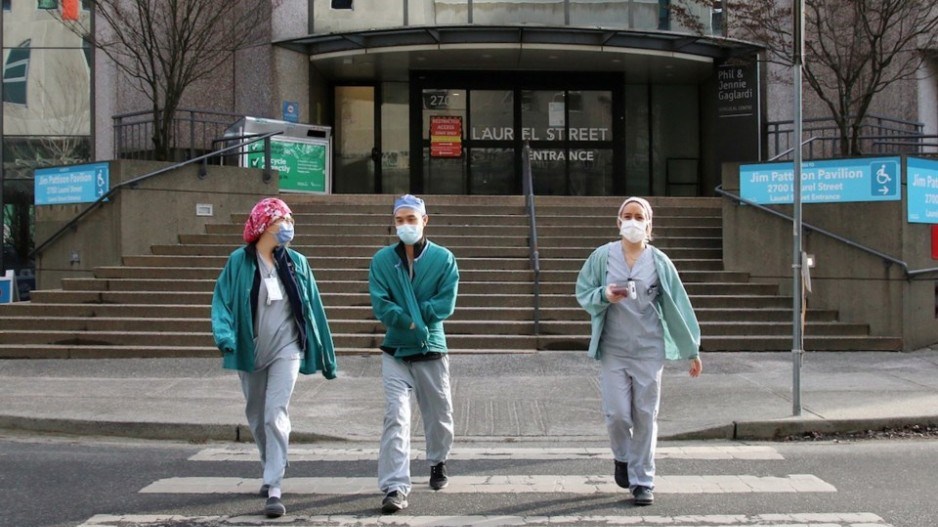Imagine an industry that created 100,000 new jobs in British Columbia over 10 years, paying over $60,000 per year on average, and mobilizing advanced technology and skills. You’d think a success story like that would be celebrated by economists and business commentators.
Well, there is such an industry in B.C. It’s called health care. It’s the biggest employer in the province. And it created over 100,000 new, decent jobs in the last decade.
Curiously, however, instead of popping champagne corks, some commentators view the creation of health care jobs as a bad sign, not a good sign. And they express equally negative attitudes toward other public-sector jobs, like those in education, community services and child care.
For example, business economists recently wrote in these pages that private-sector employment in B.C. was growing too slowly. They studiously ignored thousands of new jobs in health care, education and other essential services. It’s as if they don’t count.
But those jobs do count—just as much as private-sector jobs. They employ people. They add to GDP. They generate incomes. They support taxes. They produce services that are vital to quality, healthy living.
Directly and indirectly, they also sustain private-sector jobs, through multiple channels. Public institutions like hospitals and schools buy billions of dollars of inputs from the private sector. Their workers patronize private businesses with their own household spending—from retail to construction to transportation. And by building a healthier, better-skilled workforce, good public services facilitate private investment and innovation.
It’s a myth that strong public service employment somehow squeezes out private-sector jobs. In the last year, the number of private-sector employees in B.C. grew 1.6 per cent—significantly faster than in Canada as a whole. And B.C. is one of only three provinces where self-employment is higher this year than in 2017, despite the pandemic and its aftermath. It turns out that securely employed public workers also make good customers for small businesses.
This virtuous combination of public and private job creation explains why B.C.’s overall labour market consistently beats national averages. B.C. currently has the third-lowest unemployment rate of any province and has enjoyed consistently below-average unemployment since 2017.
Thanks to lower unemployment, combined with wage-boosting labour policies (including the highest minimum wage of any province), wages in B.C have done better than elsewhere in Canada. In fact, in 2023, B.C. took the title of highest average hourly wage for employees in Canada (previously held by Alberta). Business economists might not be thrilled about that. But people who work for a living certainly are.
Overall economic growth hasn’t been hurt by B.C.’s strong investments in health care and other public services. To the contrary, it’s been helped. B.C. had the second-fastest growth in real GDP of any province in 2023, and the second-fastest since 2017 (in both cases bested only by booming PEI). Even counting just the private sector, B.C.’s GDP growth still ranks second-fastest (again, behind PEI).
Real business investment in both non-residential capital and intangible innovation (like research and software) has grown faster in B.C. since 2017 than any other province. A well-educated and healthy workforce is key for attracting incoming investment—especially in talent-dependent industries like B.C.’s booming tech sector.
Another myth is that private-sector industries create wealth, while public-sector industries spend it. That’s also false. The jobs, incomes and taxes supported by quality public services contribute as much to prosperity as any private jobs—indeed, more so than the insecure, low-wage jobs that are typical of too many private-sector industries. It can just as reasonably be argued that private-sector industries couldn’t exist without the infrastructure, human capital and cohesiveness that public services provide.
In short, a simplistic “private-sector good, public-sector bad” perspective leads to flawed economic conclusions. It misunderstands the past performance of the provincial economy, and misdiagnoses the policies needed to make it even stronger.
B.C.’s overall labour market and economic performance in recent years rank consistently among the strongest in Canada. And the province’s strong investments in health care, education and other essential services have been an essential part of that success.
Jim Stanford is an economist and director of the Centre for Future Work in Vancouver.



